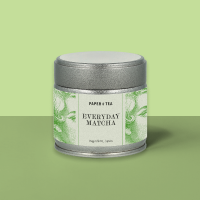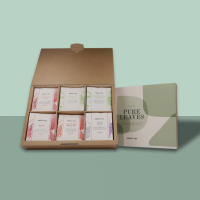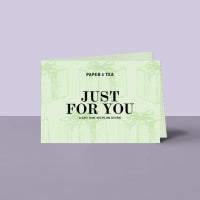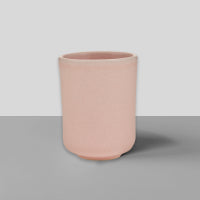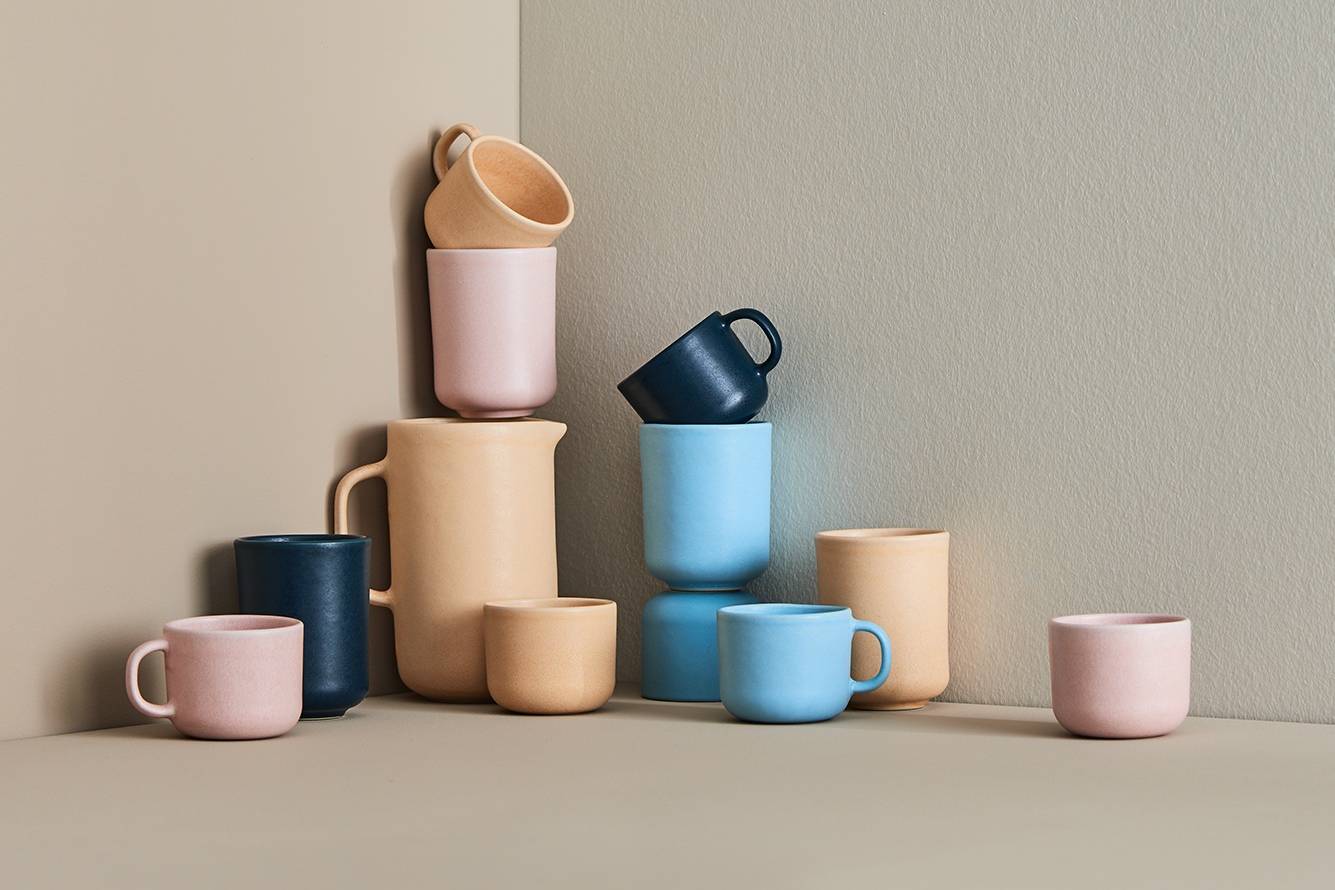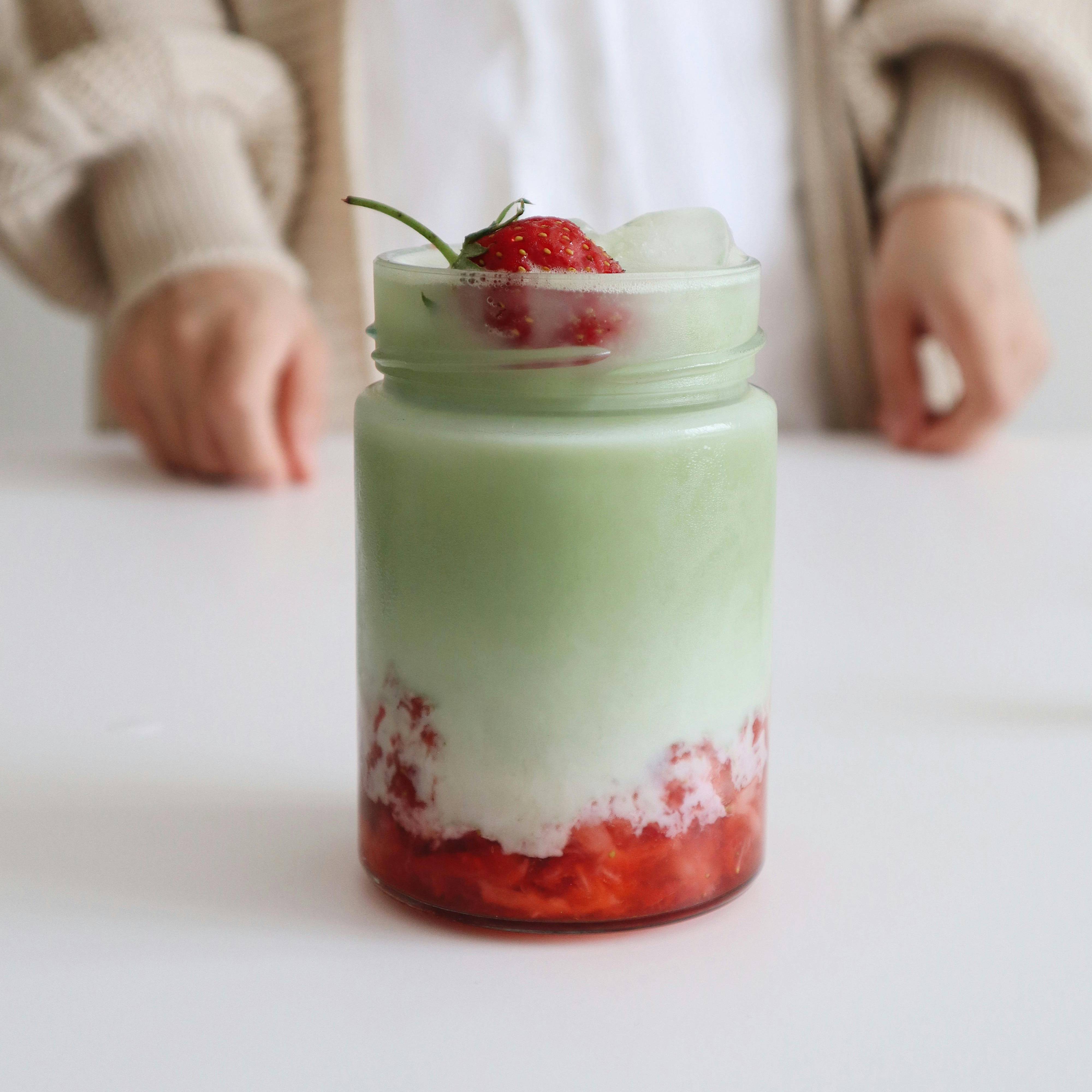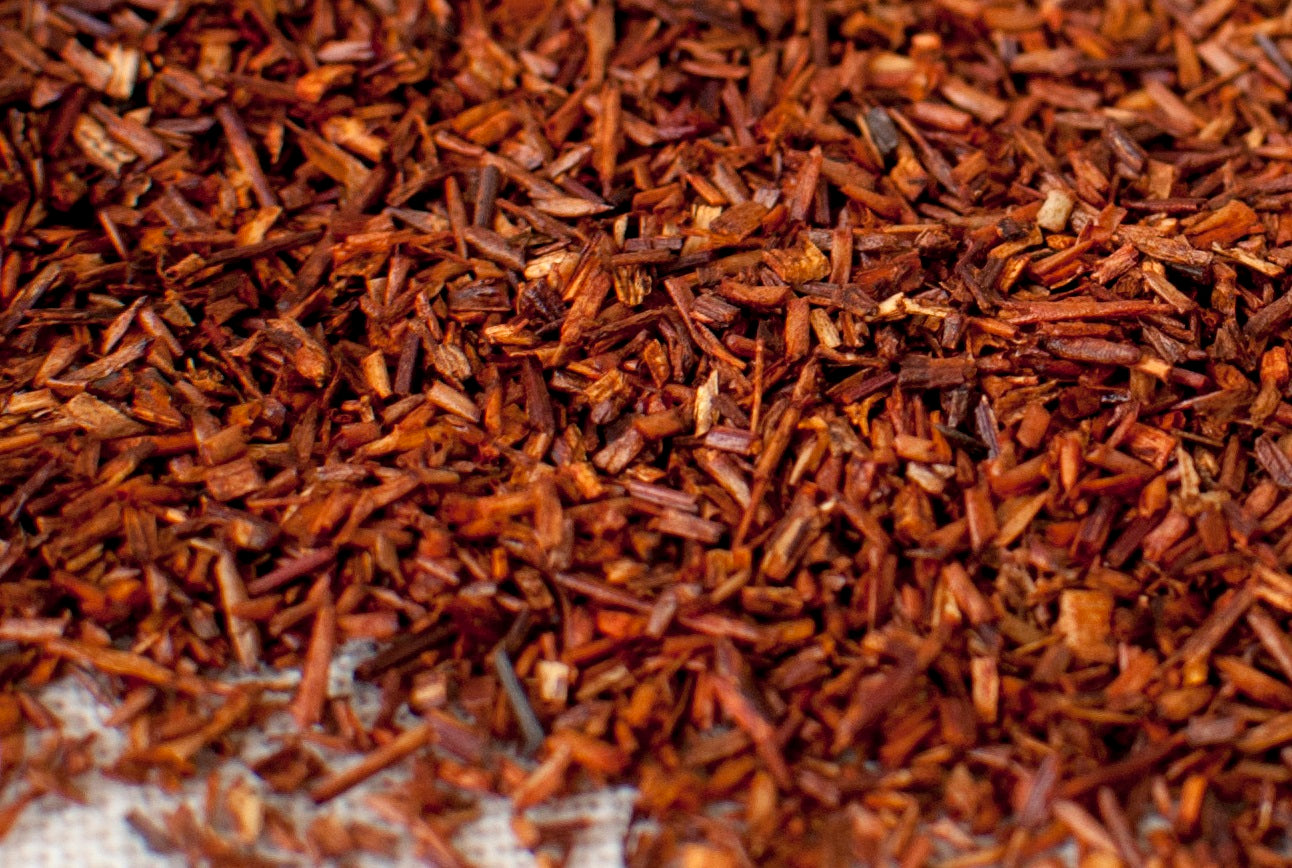When it comes to tea, you can try a variety of tastes. Some prefer fresh green tea, while others like malty black tea. But tea lovers seem to agree on one thing: after peppermint tea, fruit tea is the second most popular tea in Germany. In our guide to fruit tea, we introduce the most popular varieties, exploring their origins and giving insight into every step of the perfect fruit tea preparation, whether hot or refreshingly cold.
The Colorful Variety of Fruit Teas
Fruit tea is a delicious drink that is naturally caffeine-free! You can enjoy the versatile diversity of fruity ingredients found in nature in your cup of tea.
The Colorful Variety of Fruit Teas

Your Favorite Fruit Teas
Whether as a hot cup of tea or refreshing iced tea in summer, fruit infusions offer a colorful variety of flavors. Discover how the different varieties taste and what makes them so special.
Colorful Tea Blends
Fruit teas can be enjoyed pure, allowing the full flavor of each fruit to be admired in its uniqueness. However, fruit teas harmonize wonderfully with herbs, spices, and classic tea. Fruit tea blends are particularly popular and offer a variety of creative combinations for every taste and mood.
At PAPER & TEA, we have developed and crafted finely tuned recipes of exceptional tea blends. Many exquisite ingredients are balanced into delicious compositions.
Tea with Wild Berries
Regionally grown wild berries are a popular ingredient for fruit teas that we love. Wild berries refer to the various berries brewed in tasty fruit teas. Whether it is blueberry, strawberry, or currant, they all taste just berry-ish. The taste of these wild berries gives a sweetness, pleasant natural acidity, and a wonderful red color that transforms your cup into a bright firework.
In BERRY POMP N°819, we combine the fruity aromas of strawberries, blueberries, and currants with a variety of other regionally grown fruits. In our SPRITE'S DELIGHT N°717, we mix the grassy freshness of green tea with the flavors of strawberries and blueberries, refined with spicy basil.

Apple Tea
Apple is probably one of the most popular local fruit varieties, and as tea, it accompanies you through every season of the year. Dried apple pieces develop a fruity-honey sweetness when brewed as tea. Apple tea is less acidic than other fruit teas and is therefore used as a popular base in tea blends. Our UNTER DEN LINDEN N°818 consists of organic apple pieces, refined with the gentle aroma of linden blossom that makes it a cozy fruit and herbal tea blend for a quiet evening.
Rosehip Tea
The small, fiery red fruit is responsible for the pleasantly acidic note of this infusion. The intense red color that many associate with rosehip tea usually comes from the mixed-in hibiscus, not the rosehip itself. Pure rosehip tea colors the cup a light yellow-brown.
Hibiscus Tea
Hibiscus tea refers to the infusion of dried hibiscus flowers. It is often responsible for the beautiful color of many fruit and herbal tea blends. With our RED HIBISCUS N°820 made from whole hibiscus flowers from Malawi, you can taste the vibrant flavor of the blossom.
Citrus Fruits in Tea
Citrus fruits are used in tea in many ways. Their dried peel, for example, can be found in our MINT JULEP N°715, a refreshing green tea blend, or caffeine-free in PURE PRANA N°809, combined with lemongrass. As a natural aroma, you can taste orange combined with gentle chamomile blossom in our unique ORANGE KISS N°825.

Very Special Fruit Teas: Create Unique Moments
Besides those well-known fruit tea varieties, there are more exciting surprises to discover. Let's explore unusual tea creations together!
Baked Apple & Wild Berry
Baked apple as tea is like a winter classic reinterpreted: The sweetness of the beloved dessert, gentle honey notes, and winter spices go particularly well with wild berries, as in our PINK GRASSHOPPER N°830. Tea lovers of all ages love this colorful taste, as this naturally flavored caffeine-free drink is a delight to everyone.

Mango Tea
Mango tea is a refreshing fruit tea that reminds you of vacation. The dried southern fruit imparts a sweet note with a subtle acidity to the tea. Some would describe the flavor as a mix of peach, pineapple, and orange. Mango combines especially well with other teas and flavors, as in our BOLLYWOOD N°724. The green tea base, combined with dried mango pieces, natural mango aroma, cool mint, and other spices, results in a zesty-spicy cup of tea.
The Special Twist with Pomegranate
If you like your fruit tea sour and fresh, you should try pomegranate tea. The juicy fruit transports you to a world of 1001 Nights. As an infusion, it develops a beautiful pink color and an incredibly intense flavor.
How to Find Your Favorite Fruit Tea
What fans love about fruit teas is their natural sweet taste. There is a diverse choice of fruit tea and no limits to your curiosity. Try the different flavors and find your personal favorites.
Tips for Choosing the Right Fruit Tea
To find the right flavor, we recommend you consider some criteria. If you prefer it sweet, apple tea is a safe choice for you. Hibiscus tea, on the other hand, promises a pleasantly sweet-sour kick of freshness. Infusions of berries offer the perfect mix of fruity-sweet and zesty.
Tasting Samples: Taste Your Way to Your Favorite
For tea-curious people and true tea lovers looking to expand their taste palette, sampling packs with various fruit teas and blends are particularly exciting and offer the perfect window into the world of tea. Our HERBAL VARIETY BOX offers a unique selection of fruit and herbal teas. With our FOREST & MEADOWS SET, you will find three different tea creations from PAPER & TEA with the full aroma of hibiscus, wild berries, and citrus fruits. Let yourself be inspired by the variety of infusions.

The Art of Fruit Tea Preparation
Before you delve into countless exciting fruit teas, we’ll give you some tips for the perfect preparation of your fruit infusion.
- Fruit tea should always be brewed with 100°C boiling water.
- Since fruit tea contains far fewer bitter notes than traditional tea and the dried fruits need a moment to release their intense aromas, you should let the infusion steep a moment longer. We recommend a steeping time of at least three to a maximum of ten minutes.
- Preparation tips: Refine your fruit tea with honey, fresh herbs, and dried spices. Milk or cream does not suit fruit teas due to their natural acidity.
Equipment That Makes the Difference
With fruit tea, you can conjure up a caffeine-free, flavorful drink in just a few minutes. In our SUMO TEA POT, you can easily prepare all kinds of tea as well as fruit infusions, while the heat-resistant borosilicate glass remains taste-neutral. Additionally, this modern, round teapot puts the radiant color of your tea into the spotlight. With a reusable INFUSER, you can easily brew your fruit teas a second time, and with the unique NOMAD BOTTLE you can prepare your fruit tea to go.
Creative Recipes with Fruit Tea
The delicious infusions from fruits can be enjoyed not only as a warm cup of tea but also inspire culinary experiments. With these two recipes, you can create iced refreshments from fruit tea yourself.
Green Mango Iced Tea
- Brew 1 liter of our BOLLYWOOD N°724: Take about 16 grams of the tea and brew it with 80°C hot water for 3 minutes, then strain it.
- Round off the tea with the sweetness of your choice and let it cool.
- Mix in 100 ml of mango nectar and the juice of one freshly squeezed lemon.
- Fill a carafe with ice cubes, sliced lemon wedges, and fresh mint, and pour your tea over it.
- Enjoy your fruity iced tea.
Forest Berry Fruit Tea Mocktail
- Prepare 1 liter of BERRY POMP N°819: Take about 16 grams of the tea and brew it with 100°C hot water. Let it steep for 3 minutes and then strain it.
- Mix 3 teaspoons of syrup of your choice into the tea: strawberry, raspberry, elderflower, it depends on your taste.
- Let the tea cool completely.
- Mix in the juice of 2 freshly squeezed lemons.
- Fill a glass with ice, frozen berries, and a lemon slice.
- Add 80 ml of alcohol-free prosecco to the glass and fill the rest with the previously brewed iced tea.
- This sparkling alcohol-free iced tea drink is perfect for the next garden party!

Where Does Our Tea Come From? A Short Journey
Tea is, after water, the second most popular beverage in the world. We, too, are fascinated by the diverse and tradition-rich tea culture. Here, the quality of the tea leaves plays an important role, closely linked to its origin and sustainability throughout the processing chain.
We place great importance on where we source our tea. For the sweet-sour RED HIBISCUS N°820, we obtain the hibiscus flowers directly from the producer, the Satemwa Tea Estate in Malawi. The close partnership with the producers allows us to ensure the highest quality standards in cultivation and harvest, providing you with excellent fruit tea.
Sustainability & Responsibility in Tea Cultivation
Environmental protection and tea culture go hand in hand, whether it is tea from the traditional tea plant Camellia Sinensis or our fruit teas. Many of our fruit teas come from controlled organic cultivation. Sustainability in tea cultivation is a matter close to our hearts, enabling us to produce, blend, and enjoy the best tea.
